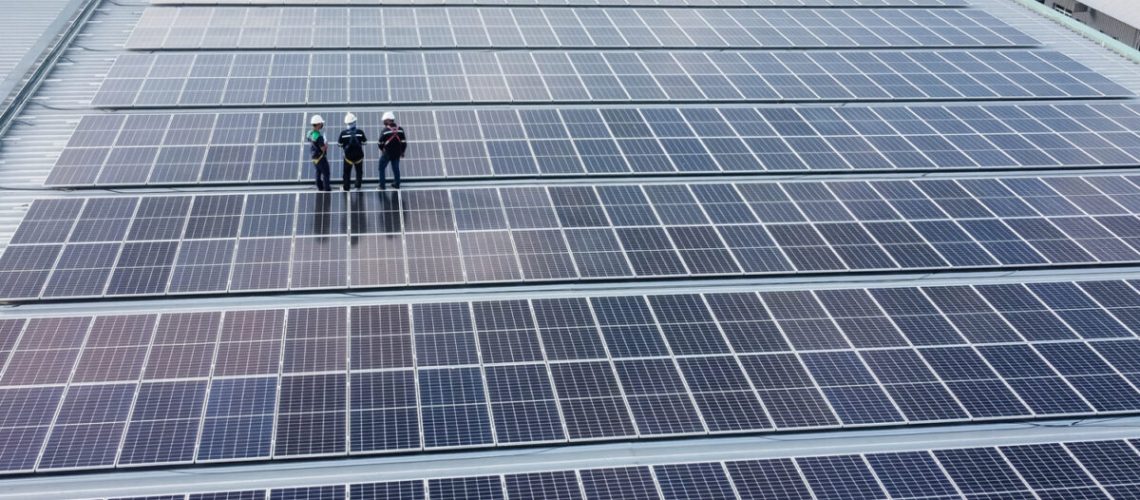California should evaluate front-of-the-meter distributed solar on an equal footing with transmission-connected utility-scale solar and behind-the-meter solar, not as an afterthought, say several advocacy groups.
A California process to evaluate pathways for the state to achieve 100% clean electricity by 2045 has been challenged by six advocacy groups for not yet considering an approach to maximize cost-effective front-of-the-meter distributed generation.
The groups propose an approach they call the “Max DG Pathway,” which would maximize cost-effective solar on the built environment, including warehouses, shopping malls, schools, parking lots, irrigation canals and highway rights-of-way. Several studies have evaluated the technical potential to deploy solar on such sites, they say.
The groups backing the proposal include The Climate Center, Center for Biological Diversity, Local Government Sustainable Energy Coalition, and Vote Solar. They submitted comments to three state agencies that are evaluating pathways to achieve the state’s clean electricity goal.
On sites in the built environment with suitable solar exposure, a “small-to-medium-size” utility-scale solar array could be deployed, probably with co-located storage, the groups say. Each solar array on the built environment would have its own front-of-the-meter (FTM) utility interconnection, even if it is physically located on the premises of an end-use customer.
The sizes of these arrays “would generally be appropriate for distribution-system interconnections,” the groups say. The solar developer could earn revenues through a power-purchase agreement with a load-serving entity, or through some other business model.
Maximizing cost-effective FTM solar and storage, the groups say, could supply a substantial amount of renewable electricity without triggering land-use concerns or other sources of public opposition, while reducing the costs of transmission upgrades and providing valuable local benefits.
Those local benefits include resilience benefits from incorporating FTM solar plus storage as grid-forming resources in community microgrids, the groups say. The resources could be developed under local, municipal or tribal ownership models “that help build community wealth and advance energy justice.”
Modeling
The groups’ key complaint relates to the state’s proposed approach to modeling various pathways to achieve 100% clean electricity. They say the three state agencies have proposed an approach to capacity expansion modeling that “would never construct a Max DG scenario,” and thus could never evaluate such a scenario.
The groups say that the state’s proposed approach would instead consider utility-scale generation as a general category, and then, through a method “yet to be determined,” would assign some share of the resulting utility-scale selection to the FTM distributed generation category. “This will create a bias that under-values and therefore under-selects” FTM distributed generation.
The groups also challenge the state’s proposed approach of including a “feasible” level of FTM distributed generation based in part on current state policies and programs. This is “backwards logic,” they say. “If a particular energy technology is shown to be beneficial and cost-effective, then the policy-maker’s mission is to devise policies to facilitate its deployment.” The groups add that current policies and programs “are not conducive” to FTM distributed generation deployment.
The groups propose that the state develop a “Max DG Pathway” scenario that could be evaluated in comparison with other pathway scenarios.
The three state agencies evaluating pathways to reach the state’s 100% clean electricity goal are the California Energy Commission, California Public Utilities Commission, and California Air Resources Board.



